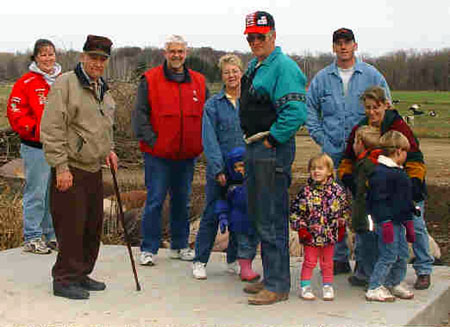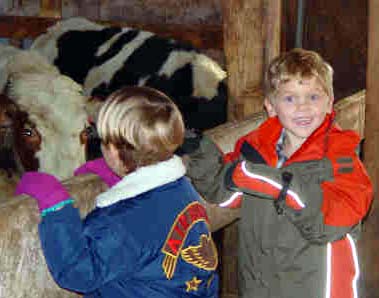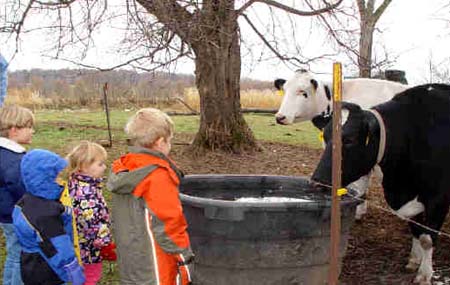Holstein-Friesian cattle, usually called Holsteins, are identified by their black-and-white coats. Some Holsteins are nearly all black or all white. A few are red and white.
Holsteins are the largest dairy cattle. They have broad hips and long, deep barrels, or body trunks. Their horns slant forward, but curve inward.
There are more Holsteins in the United States than any other dairy breed. Many farmers favor them because a Holstein cow produces more milk than other breeds. However, their milk contains less butterfat than that of other breeds.
Holsteins probably were developed from a strain of black-and-white cattle found in the province of Friesland in the Netherlands. Cattle raisers of Schleswig-Holstein in Germany also helped develop the breed.
Holsteins were brought to the United States in 1795. They are now raised in every state. Holsteins are also popular in Canada. The Holstein-Friesian Association of America has headquarters in Brattleboro, Vermont.


